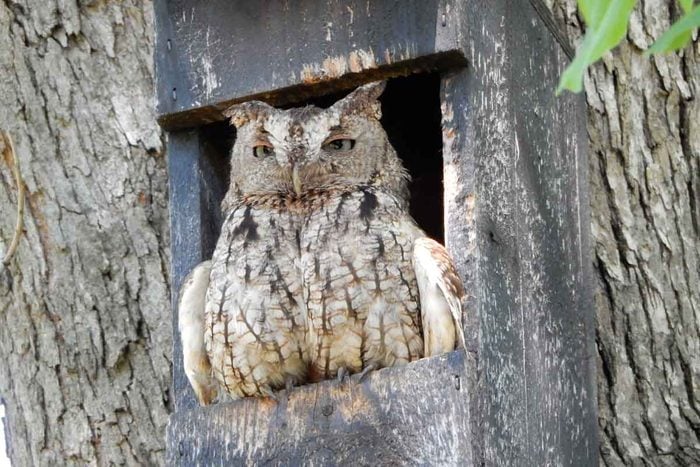How To Attract Owls for Rodent Control in Your Yard
Updated: Feb. 14, 2023

Owls are not only fascinating creatures, they can be one of your best friends when it comes to eliminating an overpopulation of varmints.
If owls formed a pest management company, they’d be in high demand. Learning how to attract owls is an effective way to control all kinds of pests in the yard. Depending on species and location, owls feed on a wide variety of varmints and pests. Small owls, such as screech owls, eat everything from insects, snails and spiders to mice. Larger owls, such as barn owls and great horned owls, feast on voles, moles, mice, chipmunks, squirrels, rabbits and occasionally reptiles such as snakes. It’s biological pest management as nature intended. Learn to distinguish between voles versus moles.
There are about 250 species of owls in the world and they can be identified by appearance and sound. Although each species has its distinguishing features, owls generally share these common characteristics: a large, round head; overly large forward-facing eyes; downward beak; and large talons. Owls have exceptional vision, particularly at dusk and dawn when they hunt, as well as acute hearing due to asymmetrical ear placement. Those features, and the ability to fly silently, make them superior night hunters. Fortunately, attracting owls isn’t hard, and your yard will benefit from their pest hunting prowess.
On This Page
How To Attract Owls with Tress and Other Plants
Trees provide a lot of wildlife value, especially to owls, because they use trees for roosting, nesting and hunting. Dead trees, or those with dead tops, are valuable to wildlife (see some examples here) and provide a “scouting” perch for raptors such as owls, hawks and eagles. If you don’t have a dead tree, you can prune out some live growth, exposing a bare branch for a roosting spot. Be sure to including living trees, too, along with fruiting shrubs, hazelnuts and ornamental grasses, which provide food and shelter for small animals owls will hunt. Learn more about creating a wildlife habitat.
Attracting Owls by Providing Habitat
Although a hollow tree or one with a large hole in a limb make the best owl habitats, you can mimic those conditions with a large nesting box. You can buy a nesting box or build one yourself. Place it in a secluded location about 12 feet off the ground. The hole of the box should be facing away from prevailing winds. For more on owl nesting boxes, visit the University of Missouri Extension.
Cut Down on Lighting
Many owls hunt at night and their excellent night vision means they don’t need any extra lighting. In fact, they’ll likely avoid it. Illumination from porch lights, security lighting and even aesthetic landscape lighting can confuse nocturnal owls — those that actively hunt at night — especially if hooked up to a motion detector. Bright outdoor lights can confuse other birds as well.
Encourage Prey
If you want owls to stick around, you have to give them prey to hunt. Untamed naturalistic gardens are a good start, because they provide lots of cover for prey animals. You can also provide a brush pile at the opposite end of your yard — it’s a favorite hideout for small animals that owls hunt. Of course, you’ll want to avoid poisoning an owl’s prey because it could end up poisoning the owl as well.